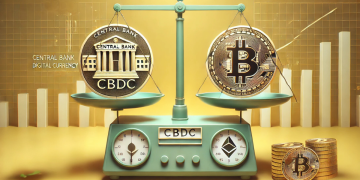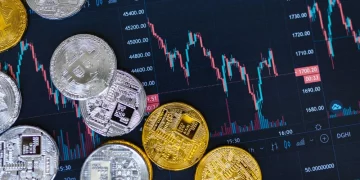The increasing use of economic sanctions against nations, organizations, and individuals has created complex ripple effects throughout cryptocurrency markets, particularly impacting how top-performing assets move across borders. As governments increasingly weaponize financial restrictions, cryptocurrency networks—designed for permissionless access—have become both battlegrounds and tools in geopolitical conflicts. The tension between crypto’s borderless design and governments’ attempts to control financial flows has created a fascinating dynamic where sanctions don’t necessarily stop transactions but rather redirect them through alternative channels, often with significant market consequences. This redirection affects liquidity patterns, exchange dynamics, and even the fundamental valuation metrics of major cryptocurrencies like Bitcoin and Ethereum.
The implementation of sanctions involves a complex cat-and-mouse game where regulators attempt to control flows while participants develop new methods to circumvent restrictions. This ongoing struggle has accelerated technological innovation in privacy tools and decentralized exchanges while simultaneously pushing regulatory development toward more sophisticated monitoring approaches. For market participants, understanding how sanctions affect transaction patterns provides valuable insights into market dynamics and potential investment opportunities. This article will examine how exchange restrictions impact market structure, analyze the effects on Bitcoin’s global flow patterns, and explore case studies that reveal the complex relationship between sanctions and cryptocurrency markets.
The Exchange Frontline: How Restrictions Reshape Market Access
Cryptocurrency exchanges have become primary enforcement points for sanctions regimes, creating significant changes in how users access markets.
The Compliance Transformation
Major exchanges have dramatically enhanced their sanctions compliance:
- Geographic restrictions: Binance, Coinbase, and other major platforms now block users from sanctioned jurisdictions
- Wallet blacklisting: Implementation of sophisticated systems to identify and block transactions from sanctioned addresses
- KYC escalation: Enhanced identity verification requirements that exceed traditional financial standards
- Transaction monitoring: Advanced analytics to detect potential sanctions evasion patterns
Market Structure Impacts
Exchange restrictions have altered global market structure:
- Liquidity fragmentation: Different pricing and liquidity across geographic regions
- Arbitrage opportunities: Price disparities between compliant and non-compliant exchanges
- Volume migration: Trading volume shifting to decentralized exchanges and peer-to-peer platforms
- New gateway creation: Emergence of new jurisdictions as crypto entry points
The Compliance Gap
Not all exchanges comply equally with sanctions:
- Tier 1 exchanges: Fully compliant with OFAC and other sanctions regimes
- Tier 2 exchanges: Partial compliance with varying enforcement standards
- Tier 3 exchanges: Minimal compliance primarily serving restricted jurisdictions
- DEX proliferation: Fully permissionless platforms that cannot practically implement restrictions
Bitcoin’s New Geography: How Sanctions Redirect Global Flows
Sanctions have significantly altered how Bitcoin moves around the world, creating new patterns and opportunities.
Flow Redirection Patterns
Sanctions have changed Bitcoin’s movement patterns:
Regional Flow Changes
- Increased peer-to-peer trading: LocalBitcoins and similar platforms seeing revived activity in sanctioned regions
- Geographic price disparities: Significant and persistent price differences between regions
- Mining redistribution: Mining operations relocating to avoid sanctions-related banking issues
- New hub emergence: jurisdictions like Dubai and Singapore gaining importance as neutral hubs
Technical Adaptation
Market participants developing new methods:
- Privacy tool adoption: Increased use of CoinJoin, Wasabi Wallet, and other privacy solutions
- Cross-chain bridging: Moving value between chains to obscure origins
- Asset swapping: Converting between cryptocurrencies to break transaction trails
- Timing strategies: Staggering transactions to avoid pattern detection
Market Quality Effects
Sanctions impact market functioning:
- Liquidity reduction: Overall market liquidity decreases as participants exit or face restrictions
- Volatility increase: Reduced liquidity and fragmentation increase volatility
- Slippage costs: Larger transactions face higher execution costs due to fragmented liquidity
- Market efficiency: Price discovery becomes less efficient across fragmented markets
Case Studies: Sanctions in Action
Several recent examples demonstrate how sanctions affect cryptocurrency markets and participant behavior.
The Russia Response (2022-Present)
Western sanctions against Russia created complex crypto market effects:
- Initial panic: RUB/BTC trading volume increased 10x immediately after invasion
- Exchange response: Major exchanges complied with sanctions while smaller platforms continued serving Russian users
- Price impact: Bitcoin traded at 5-15% premiums on Russian exchanges
- Long-term adaptation: Development of sophisticated evasion methods including crypto-fiat ramps through neighboring countries
The Tornado Cash Sanctions (2022)
OFAC’s sanctioning of a smart contract created unprecedented questions:
- Immediate DeFi impact: Many DeFi protocols hurriedly implemented blocking mechanisms
- Technical debate: Questions about whether smart contracts can truly be “sanctioned”
- Market reaction: Privacy token prices increased as investors sought alternatives
- Developer response: Accelerated development of new privacy tools and techniques
The Binance Settlement (2023)
Binance’s $4.3 billion settlement included sanctions violations:
- Compliance overhaul: Binance implemented massive compliance improvements
- Market share shifts: Competitors gained share as Binance tightened restrictions
- User migration: Affected users moved to other platforms including DEXs
- Industry impact: Other exchanges preemptively enhanced compliance measures
Strategic Implications for Market Participants
Sanctions have created new strategic considerations for all market participants.
For Investors and Traders
- Geographic diversification: Maintaining access across multiple jurisdictions
- Exchange selection: Carefully evaluating exchanges’ compliance stances
- Privacy education: Understanding and appropriately using privacy tools
- Legal awareness: Staying informed about changing regulatory requirements

For Exchanges and Service Providers
- Compliance investment: Significant resources required for sanctions compliance
- Geographic strategy: Deciding which markets to serve and how
- Technology development: Building sophisticated monitoring and blocking systems
- Competitive positioning: Using compliance as competitive advantage
For Regulators and Policymakers
- Effectiveness assessment: Evaluating how well crypto sanctions actually work
- International coordination: Improving cross-border regulatory cooperation
- Technology understanding: Developing better understanding of blockchain technology
- Balance finding: Weighing financial security against innovation and privacy
The Future of Sanctions in Cryptocurrency Markets
Several trends will shape how sanctions affect cryptocurrency markets going forward.
Technological Evolution
- Better privacy tools: Continued development of more effective privacy solutions
- Detection improvements: More sophisticated blockchain analytics capabilities
- DEX development: Growth of decentralized exchanges reducing sanctionability
- Cross-chain solutions: Technologies that make tracking more difficult across chains
Regulatory Development
- Global standards: Movement toward international cryptocurrency sanctions standards
- Smart contract regulation: New approaches to regulating DeFi and smart contracts
- Exchange licensing: Stricter requirements for exchanges operating across borders
- Enforcement escalation: More aggressive enforcement actions and larger penalties
Market Adaptation
- New financial centers: Emergence of crypto-friendly jurisdictions as new hubs
- Industry specialization: Development of firms specializing in sanctions compliance
- Risk pricing: Markets better pricing sanctions risk into asset valuations
- Innovation response: Continued technological innovation in response to restrictions
Conclusion: The Unstoppable Force Meets the Immovable Object
The interaction between sanctions and cryptocurrency markets represents a fascinating clash between traditional financial control mechanisms and innovative technology designed specifically to resist such control. While sanctions have certainly affected market structure and flow patterns, they have largely failed to completely prevent transactions—instead redirecting them through alternative channels and accelerating technological innovation.
This dynamic has several important implications. First, it demonstrates the resilience of cryptocurrency networks against traditional financial controls. Second, it shows how technological innovation can outpace regulatory development. Third, it reveals that determined participants will usually find ways to circumvent restrictions, though often at higher cost and complexity.
For market participants, understanding sanctions’ effects provides valuable insights into market dynamics and potential opportunities. The price disparities, liquidity fragmentation, and flow redirection caused by sanctions create both risks and opportunities for attentive observers.
Looking forward, the cat-and-mouse game between regulators and market participants will likely continue escalating. Regulators will develop more sophisticated monitoring and enforcement capabilities, while developers will create enhanced privacy and circumvention tools. This arms race may ultimately lead to more mature, sophisticated markets that can balance privacy, compliance, and efficiency in ways that traditional financial systems cannot.
The ultimate outcome may be a financial system that offers multiple options along the spectrum from total transparency to complete privacy, with participants able to choose their preferred balance based on individual needs and risk tolerances. In this future, sanctions may become more targeted and effective against specific bad actors while having less impact on legitimate users and overall market functioning.































